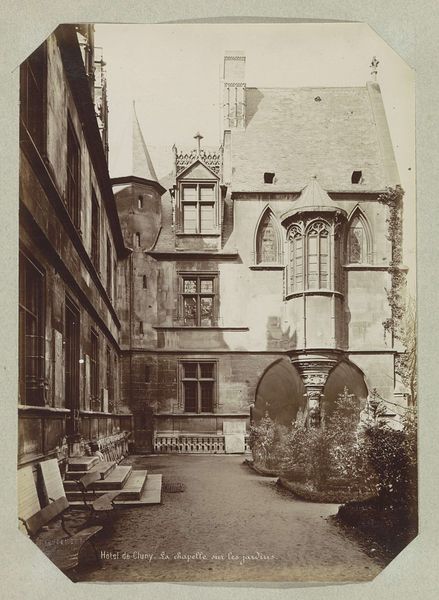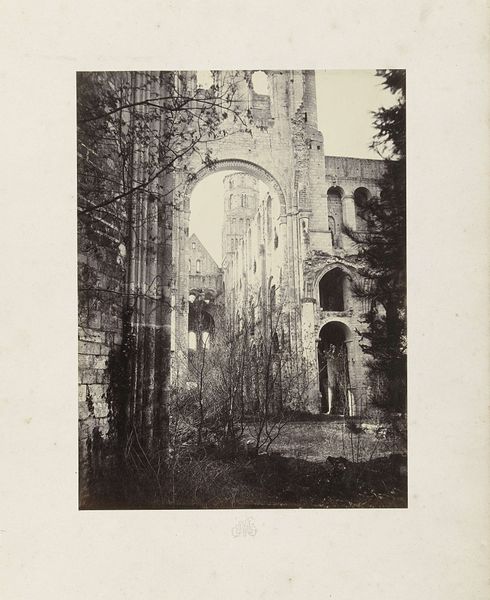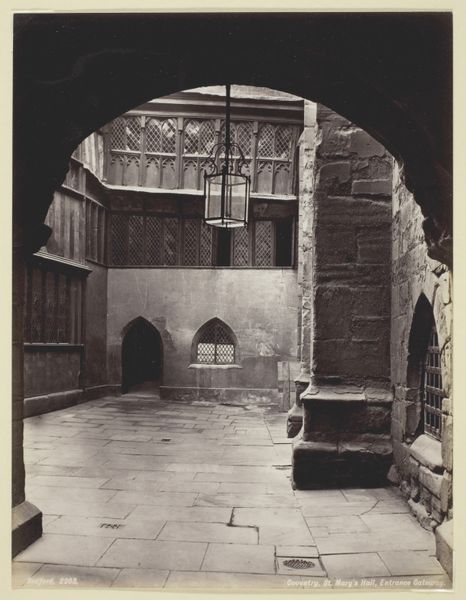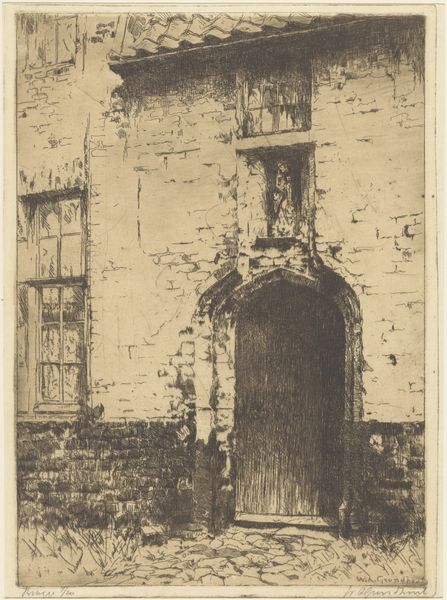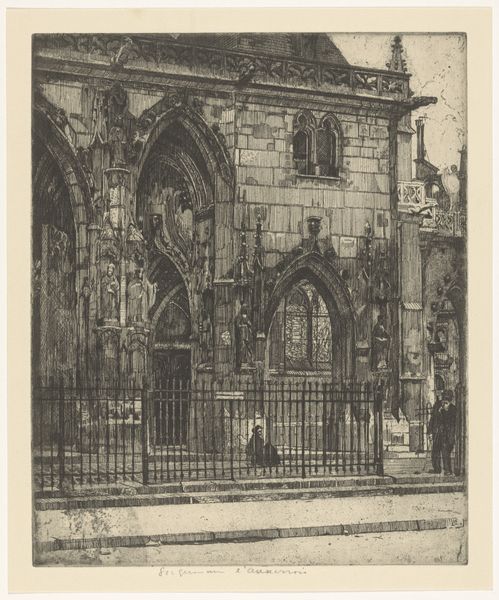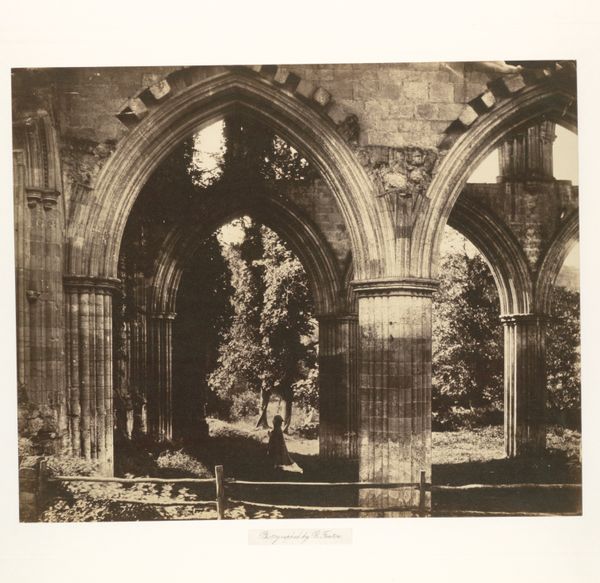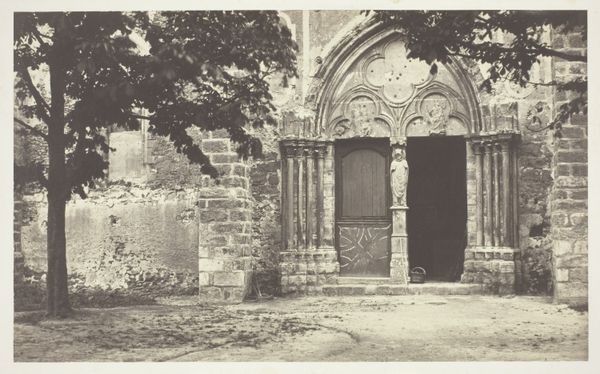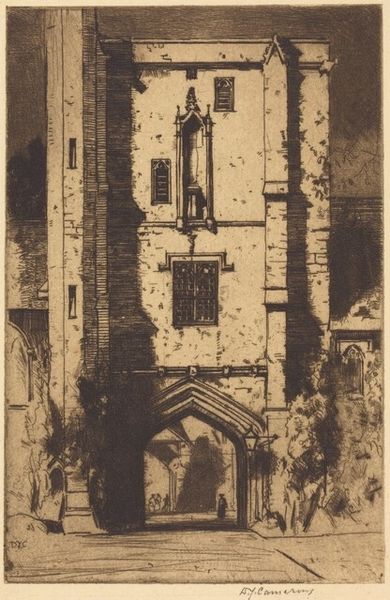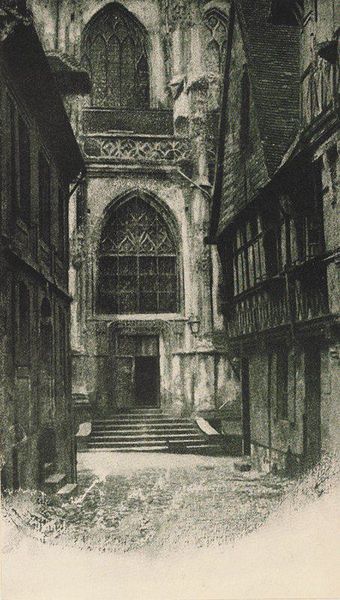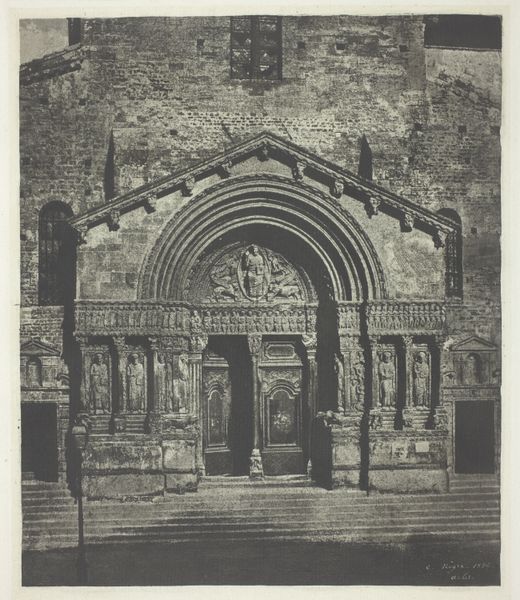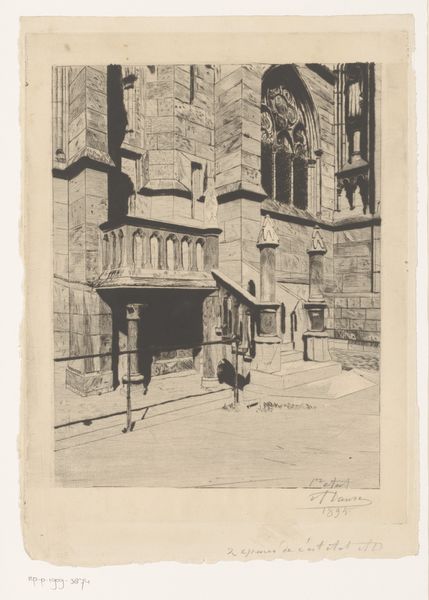
print, photography, collotype, architecture
# print
#
sculpture
#
landscape
#
photography
#
collotype
#
arch
#
architecture
#
realism
Dimensions: 32.4 x 24.2 cm (12 3/4 x 9 1/2 in. )
Copyright: Public Domain
Editor: Here we have Gustave Le Gray’s "Hotel de Cluny, Paris," a collotype print from 1851 currently residing at the Metropolitan Museum of Art. I’m struck by the contrast between the sharp detail in the building's architecture and the blurred, almost ghostly, presence of the surrounding foliage. What draws your eye in this composition? Curator: Immediately, the photograph evidences a deliberate formal arrangement. Le Gray orchestrates a captivating interplay between light and shadow. Observe how the octagonal tower acts as the focal point, with its intricate gothic tracery and leaded glass windows sharply defined against the muted tones of the surrounding stone. Editor: I see what you mean about the tower commanding attention. But what about the blurry foreground? It almost feels like an obstruction. Curator: Precisely! The obscuring foreground serves not as a detriment but as a calculated aesthetic choice. Consider the strategic placement of the shadowy mass; it frames the composition, guiding the viewer's gaze toward the central architectural subject, enhancing depth through the creation of planes. Ask yourself, how does the calculated tonal range affect your interpretation? Editor: That makes a lot of sense. It’s like he's using the darkness to emphasize the details he wants us to see. The contrast does create a kind of dramatic tension. So, by carefully manipulating light and shadow, Le Gray guides the viewer through a visual journey? Curator: Precisely, through a delicate negotiation between clarity and ambiguity, Le Gray transcends a mere record of architecture. The photograph is a visual exploration of form, space and surface. Editor: This has completely shifted how I see this image! Thanks. I was so focused on what I thought were flaws that I missed the artistic choices. Curator: It is through sustained critical visual examination that these subtleties begin to reveal themselves, and indeed shape one’s experience of the art object.
Comments
No comments
Be the first to comment and join the conversation on the ultimate creative platform.
